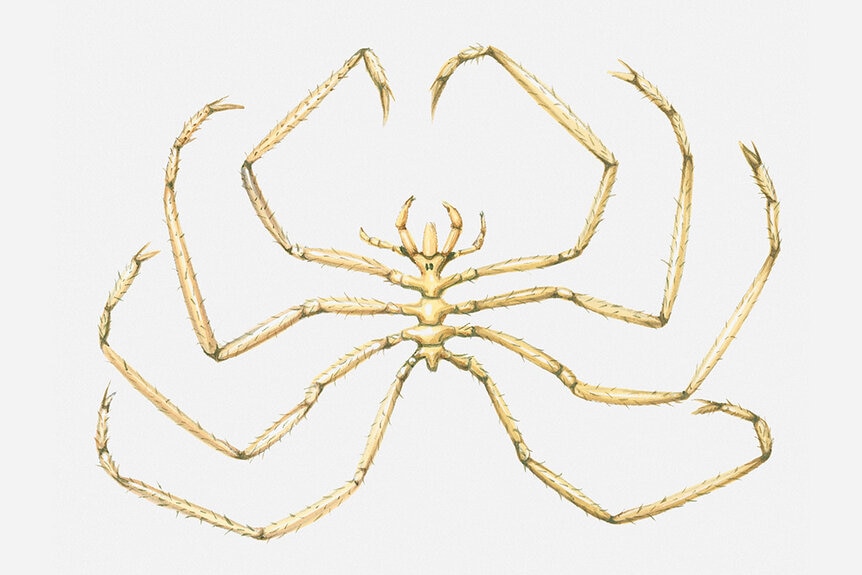Create a free profile to get unlimited access to exclusive videos, sweepstakes, and more!
What (Horrifying) Animals Live Near the Titanic Wreck?
These are only the ones we know about!

James Cameron is no stranger to the deeps of the world. In retrospect, Cameron’s underappreciated 1989 science fiction film, The Abyss, might have hinted at what would become a lifelong obsession. To date, Cameron has made more than 30 dives to the wreck of the Titanic, where he estimates he has spent more time than the captain of the ship. And those dives were only a precursor to Cameron’s ultimate underwater destination, the Mariana Trench’s Challenger Deep.
On March 26, 2012, Cameron slipped beneath the surface of the Pacific in a custom submersible built for one, on a journey to the deepest point in the world’s oceans. He wasn’t the first person to go there, but he was the first to go alone. Never one to miss an opportunity for movie magic, Cameron documented the entire process from design to descent, in the documentary Deepsea Challenge, streaming now on Peacock.
The First Animals to Call Titanic Home
Despite that record breaking dive, Cameron will perhaps be forever tied to the wreck of the Titanic, which he immortalized on film in his 1997 historical fiction blockbuster. While the sinking of the Titanic was an undisputed human tragedy, we aren’t the only species impacted by the ship’s plunge into the frigid waters of the deep Atlantic.
RELATED: Viral TikTok Conspiracy Theories Claim The Titanic Never Actually Sank
So often we think only of the 700 or so survivors and the 1,500 victims who died when the Titanic sank, but they went down alongside a number of non-human animals who came along for the ride. There were 12 dogs on the ship, three of whom made it onto lifeboats and survived. The ship also housed an unknown number of cats including the ship’s official mascot Jenny, as well as an unknown number of birds including chickens, cockerels, and at least one canary. There was also, of course, a robust population of mice and rats. When the Titanic went down in the early morning of April 15, 2012, 350 nautical miles off the coast of Newfoundland, Canada, it took all of the animals — save three dogs — with it.
Today, the ship lies beneath 12,000 feet of water at the bottom of the Atlantic. The waters above the Titanic are populated with all kinds of familiar creatures. Several species of whales, tuna, dolphins, great whites, sea turtles, narwhals, orcas, and so much more call those waters home, but things get weird when you descend to the seafloor.
What Animals Live at Titanic Now?
The deeps of the ocean are among the least understood ecosystems in the world, mostly because they aren’t easy to get to. In fact, the environs of the abyss are so fundamentally different from the surface that the creatures who live there resemble little else on Earth.
Beyond 10,000 feet, in the oceans’ abyssal zones, animals have adapted to a world with no day-night cycle, no seasonal changes, and almost no impact from weather at the surface. No sunlight reaches those depths. It is dark, it is cold, and the pressure is crushing. The abyss is a world almost frozen in time.
To get there, you’d hop a boat and start sailing directly away from the coast. First, you’ll encounter relatively shallow waters over the continental shelf. After a while, the shelf will drop dramatically in what’s known as the continental slope. At the bottom is the abyssal plain, a vast stretch of ocean more than 10,000 feet deep. That’s where Titanic lies.
Abyssal plains cover more than 70% of the ocean floor and are the largest habitats on the planet. Despite their size, the plains and the animals who live there remain largely mysterious. What animals we have discovered at those depths are alien and, often, horrifying.
RELATED: James Cameron commissions actual study in hopes of settling 'Titanic' door debate once and for all
Choose any random spot on the abyssal plain and you’re likely to find various species of marine worm sifting through the muddy sediments. You’ll also find isopods and other crustaceans. Most of the creatures at those depths have exoskeletons, or else no skeletons at all, but there are some fish.
If you’re lucky while swimming the dilapidated halls of the Titanic, you’ll brush shoulders with Abyssobrotula galatheae, a monstrous looking eel who eats worms and crustaceans. It is covered in a ghostly, semitransparent skin which allows the musculature beneath to show through. It has eyes, but they are small, set deep in the skull, and believed to be non-functional. Instead, the species relies on a number of sensory pores on their head to hunt prey in the endless blackness of the abyss.
If you were hoping the Titanic might offer a spider-free environment, we’re sorry to disappoint. The abyssal plain has spiders, and how. Giant sea spiders (above) live at depths between 7,000 and 13,000 feet, putting Titanic squarely within their home turf. They are found in deep waters worldwide, where they crawl along the bottom or swim through the water using legs which can be half a meter in length. When they find something tasty to eat, they slurp it up with their enormous straw-like proboscis. Just awful.
Perhaps the most successful creature to call the Titanic home is a bacteria called Halomonas titanicae. It was first isolated in 2010, from icicle-like rust features called rusticles, growing off of the ship. The bacteria grows in vast colonies atop the rusticles, which they consume for food. Over time, the bacteria will consume all of the iron in the ship and Titanic will be lost to us forever. There’s always something waiting to eat you in the abyss, even if you’re made of metal.
Watch Deepsea Challenge, streaming now on Peacock, and see the weirdness of the deep ocean for yourself.



























